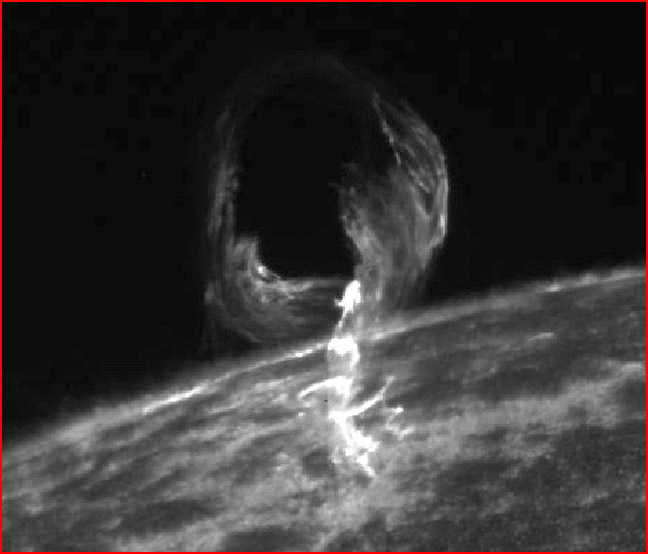|
|
||
 Credit: TRACE, NASA |
||
|
pic of the day Links:
Society for
|
Nov 16, 2004 Nobel Laureate Irving Langmuir coined the term "plasma" in the 1920's. He chose the term because plasma acted almost as if it were alive. Its behavior is complex and hard to predict. It forms itself into cells that remain separate from each other. It creates long twisted currents that carry energy from one region to another. It separates the atoms of one element from the atoms of another. At higher energy levels, it creates dozens of specific patterns of shapes and behavior that evolve in predictable ways. Langmuir probably wasn't the first to compare plasma behavior to life. Plasma Physicist Anthony Peratt has presented a paper proposing that ancient eyewitnesses observed high-energy plasma formations in their skies. Peratt has studied plasma instabilities for a quarter of a century. When it was brought to his attention that some of the odd rock art images resemble plasma discharge forms, he was intrigued. Over the past few years he has collected and classified rock art data, comparing the forms to the plasma discharge patterns he's studied in the lab. The ancient forms are not only similar to the lab forms, many can be overlaid exactly. Today, we can still see a few of the lower-energy discharge patterns in auroras. Peratt reasons that when rock art was first being carved and painted on stone cliffs all over the world, plasma in the Earth's atmosphere was much more active than it is today. He calls it an enhanced aurora. All of his eighty-seven classes of plasma instabilities can be found carved on rock. What did the ancients see? Their legends speak of a time of paradise and peace followed by a celestial war, with planetary gods flinging thunderbolts at each other and at the Earth. The story of the rocks also begins with peaceful scenes of grazing animals (many extinct today) followed by images of plasma discharge phenomena. The geological record for that era speaks of extinction of large mammals, destruction of forests, changes in river systems, melting glaciers and a major rise in sea-level all over the world. Are these related to the plasma display above and the legends?
The photo above is of a
solar flare from the TRACE orbiting observatory. It exhibits many of the
plasma patterns seen both in the lab and in rock art. It also looks
"alive"--a plasma "angel". Seeing heaven-spanning formations like these,
rooted on Earth but towering to the heavens, would our ancestors have
imagined living gods engaged in celestial war? |
|
|
Copyright 2004: thunderbolts.info |
||
